 Technology
Technology  Technology
Technology  Humans
Humans 10 Everyday Human Behaviors That Are Actually Survival Instincts
 Animals
Animals 10 Animals That Humiliated and Harmed Historical Leaders
 History
History 10 Most Influential Protests in Modern History
 Creepy
Creepy 10 More Representations of Death from Myth, Legend, and Folktale
 Technology
Technology 10 Scientific Breakthroughs of 2025 That’ll Change Everything
 Our World
Our World 10 Ways Icelandic Culture Makes Other Countries Look Boring
 Misconceptions
Misconceptions 10 Common Misconceptions About the Victorian Era
 Mysteries
Mysteries 10 Strange Unexplained Mysteries of 2025
 Miscellaneous
Miscellaneous 10 of History’s Most Bell-Ringing Finishing Moves
 Technology
Technology Top 10 Everyday Tech Buzzwords That Hide a Darker Past
 Humans
Humans 10 Everyday Human Behaviors That Are Actually Survival Instincts
 Animals
Animals 10 Animals That Humiliated and Harmed Historical Leaders
Who's Behind Listverse?

Jamie Frater
Head Editor
Jamie founded Listverse due to an insatiable desire to share fascinating, obscure, and bizarre facts. He has been a guest speaker on numerous national radio and television stations and is a five time published author.
More About Us History
History 10 Most Influential Protests in Modern History
 Creepy
Creepy 10 More Representations of Death from Myth, Legend, and Folktale
 Technology
Technology 10 Scientific Breakthroughs of 2025 That’ll Change Everything
 Our World
Our World 10 Ways Icelandic Culture Makes Other Countries Look Boring
 Misconceptions
Misconceptions 10 Common Misconceptions About the Victorian Era
 Mysteries
Mysteries 10 Strange Unexplained Mysteries of 2025
 Miscellaneous
Miscellaneous 10 of History’s Most Bell-Ringing Finishing Moves
Top 10 Secrets Of Life Aboard A Cruise Ship
It is estimated that more than 25 million people take a cruise each year. Chances are, if you haven’t been yourself, you know someone who has. That’s a LOT of people. Especially, when you consider that each ship can carry as many as 3,000 guests or more. That’s 3,000 people who will eat, sleep and play on board for 3 – 7 days. All their meals have to be made, beds made, medical needs met and entertainment provided twenty four hours a day. It’s because of this that the big-name cruise lines have perfected a system of obfuscation and sleight of hand to maintain the illusion of a well-oiled machine, no matter what’s going on behind the scenes. With that in mind, here are some of the surprising facts about life aboard a cruise ship.
10 Things You Probably Don’t Know About Life On A Destroyer
10 Airing Your Dirty Laundry
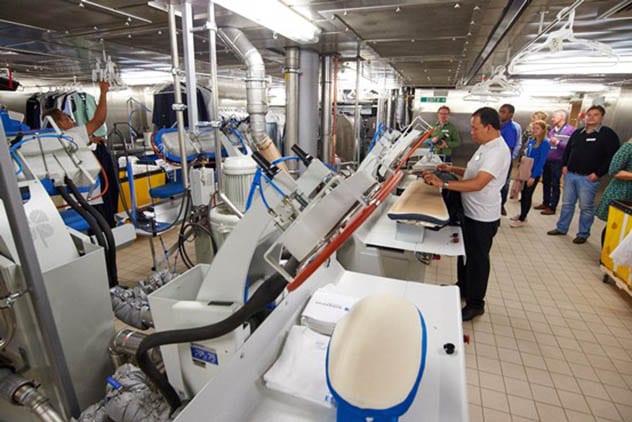
The busiest room on a cruise ship is also the hottest, the smelliest and arguably the most important. The laundry on a massive ocean liner is a lot more than a few industrial washers and an ironing table. Literal mountains of laundry accumulate every single day while at sea, mountains that have to be torn down, seperated, cleaned, sanitized and returned on a non-stop basis. With an average 3,000 passenger ship, add another 1,500 crew members who have uniforms and upwards of 60,000 pillowcases and bedsheets per week you have over 50 tons of laundry passing through the bowels of the ship in a non-stop parade of stains, weird smells and tough odors. A mid-size ship like Royal Caribbean Majesty of the Seas can have an entire bank of ten or more super-sized washer and dryer systems, capable of handling hundreds of sheets and blankets each running at the same time and a full crew constantly folding, steaming, pressing and treating new carts as they arrive.
On ships that provide specialized laundry services for guests, another entire shift is responsible for personally cleaning and pressing these items in a separate station. To make matters worse, the crew often don’t wash their clothes with the guest laundry, instead, operating a set of residential size washing machines in a crew designated area on their own time. And you thought your job was tough.[1]
9 Racist And Sexist Meals

If you’ve been on a cruise you know dining the highlight of the trip for many passengers and you may think that this extremely luxurious setting is a chance to relax and unwind, taking your time to savor every bite but unless you’ve been on the kitchen staff you might not know that your entire meal has been planned, arranged and executed down to the minute. Aboard the Majesty of the Seas for example every meal is timed from start to finish to hit a target of 32 minutes with a 2 minute window of variation. With several thousand patrons seated at any one time the task is monumental but possible because every single thing that happens on a cruise ship is studied, analyzed and perfected until it runs like clockwork.
Advanced demographics provide the kitchen staff with a highly accurate breakdown of the dining habits of their guests based on ethnicity, background, age and gender. This information tells them exactly how much of which foods to make and predicts whether there will be a run on the rack of lamb or the chicken parmesan. Wait staff are then able to manage their tables more efficiently, allowing the maximum capacity in each of their dining rooms over the course of a single evening.[2]
8 Torturously Long Hours
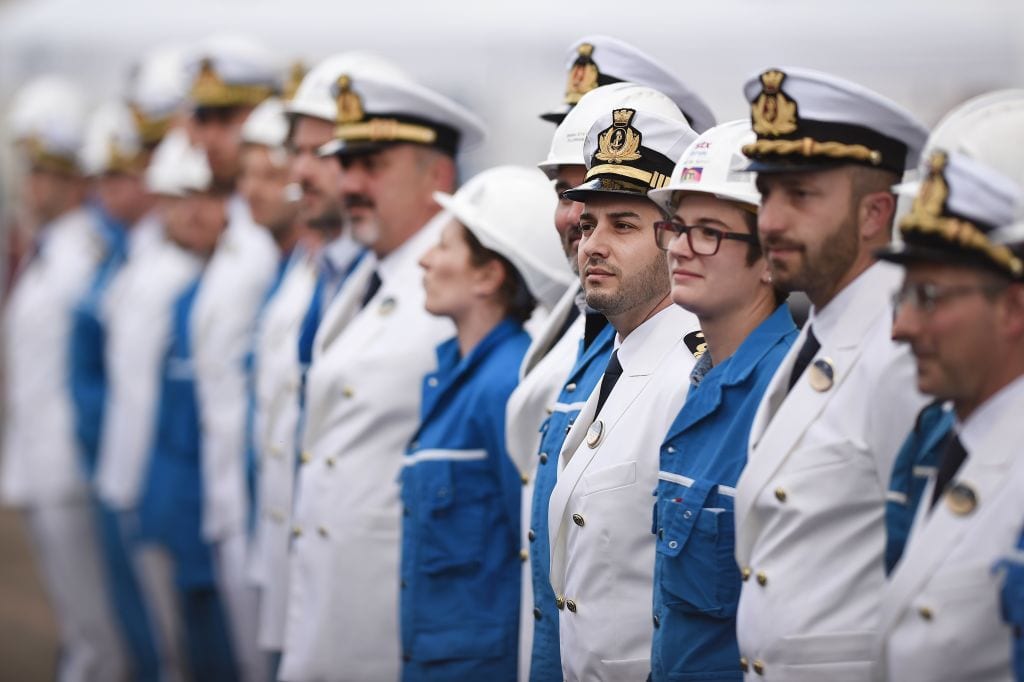
The amount of hours an average cruise shift crew member works can be somewhat misleading at first glance and will vary wildly depending on the area of the ship they work in. One thing that is pretty much standard is that everyone works a LOT more than you think they do. Some estimates put an average month at sea clocking over 300 hours of working time. Contrasting with 160 a month for the average office worker. This is partly because laws are different for cruise ships than other companies and because of the sheer amount of work it takes to keep one running.
The secret is, cruise ship workers are on a contract, lasting 6 – 9 months usually and during this time they don’t take time off. Security teams will often work 24 hours straight and sometimes more on the first days of the cruise. Maintenance and retail workers will work 10 hour shifts, often given only 5 hours to rest before starting again. This brutal schedule is one of the reasons it’s rare to see American staff on a cruise ship, even those from US ports. The turnover rate for employees accustomed to a regular schedule with frequent breaks and time off is too high to be sustainable in an industry that needs thousands of resilient workers at their best on little no to sleep at all times.[3]
7 Hidden Decks
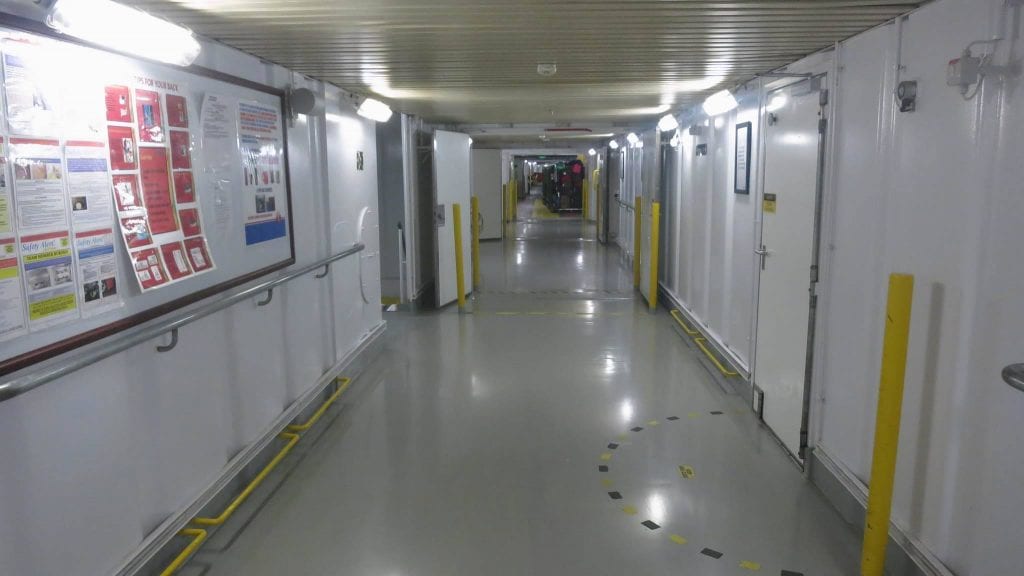
If a cruise ship is a city on the sea, then there are very clearly two sides of town. The upper decks, with their glitz, glamor and creature comforts and the ‘other side’ of the tracks. The hidden lower decks, at or below sea level where an entire community of workers, made up of 60 or more nationalities all live, work and play together in a stripped down, bare essentials environment hidden from the prying eyes of paying guests. Though they may also have their own bar, their own ‘party rooms’ and occasionally movie theaters. The incredible thing about this hidden zone within the ship is that it simultaneously connects every other area on board while remaining completely invisible to anyone who doesn’t know where to look.
A single corridor, extending from bow to stern often referred to as I-95 gives crew a route to move around beneath the feet of the passengers and appear anywhere on board without having to travel the main corridors. You may notice when you’re on board that staff seem to pop up from nowhere even though they’re never in the elevators, never passing by the pools and unless working in the rooms never present in the hallways of the sleeping decks. This is all by design to keep up the illusion that this entire production runs effortlessly, while guests continue to throw back pina coladas unbothered by a crew that often numbers one staff member for every two guests on board.[4]
6 Drunken Sailors
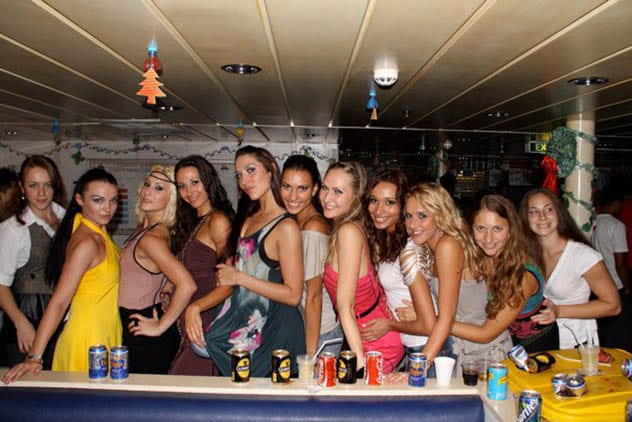
Something else that may come as no surprise is the staff have their own world below the decks where things are going on that often rival or even top the partiers living up on the pool decks and in the bars. Cruise staff are far from their homes for 6 – 9 month out of the year and many live a completely separate life when on board than on land. For starters, crew members admit that more than often if they’re not working, or getting the very rare opportunity to catch some Zs, they’re drinking. In fact staff have their own bar and facilities where the same cocktail that costs $10 on deck is rarely more than $1.50. Bargain basement prices are just one of the perks of life at sea.
Staff have admitted that while it’s frowned upon to be seen drunk by passengers as long as you’re doing job well, random breathalyzer tests are nothing to fear. And as expected when a group of sleep deprived, intoxicated adults are thrown in close quarters for long periods of time, inevitably there’s going to be some shenanigans. So much so that the industry has developed a reputation for being one of the most sexually permissive environments on the planet. Frequently resulting in confessions that life as a cruise ship worker makes a fraternity look like a weekend at your parent’s house.[5]
10 Fascinating Finds And Stories Involving Old Ships
5 Plastics Are Dumped In The Sea
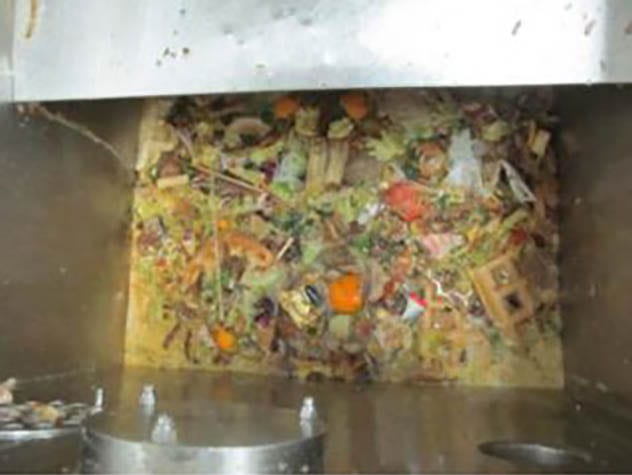
A question that anyone who’s spent time on a cruise ship will eventually ask is, where does all the waste go? If you take one lap around the dining room or buffet table at lunch you’ll notice piles of half eaten food, left behind by vacationers too busy having fun to be bothered with minor details like waste disposal. In fact a single cruise ship can produce over 14,000 pounds of ‘wet waste’ (food scraps, etc.) per day. So where does all this go? You guessed it, in the ocean. Cruise ships are masters at reducing volume of waste held on board. What can be burned is thrown into an incinerator and stored as ash to be offloaded at the next available port.
Food waste on the other hand is reduced into a sludge, processed and refined until it is in its smallest possible state and then released into the ocean as food for marine life. At 7 tons per day, per ship conservatively, that’s a lot of food slime attracting whales, sharks, dolphins and anything else with a mouth to feed. Unfortunately, sometimes they also dump sewage and other pollutants, requiring intervention from officials. Oh, and there’s a lot of plastic in that food waste.[6]
4 A Good Deal . . . For The Cruise-line
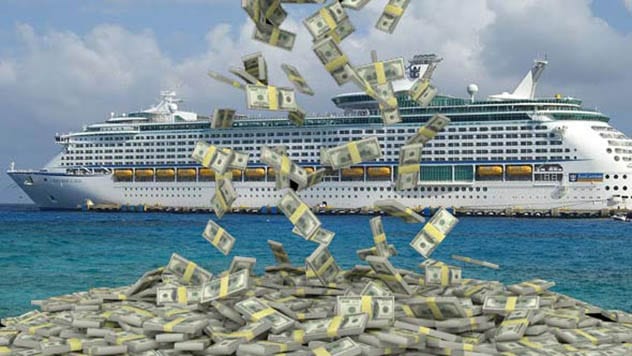
The key to most cruise packages is that they’re able to provide a seemingly endless amount of amenities like free drinks, unlimited buffets, Vegas style floor shows, shore excursions and 5 star treatment at prices that are unbeatable. At first blush it doesn’t look like the math could ever work out in the cruise company’s favor, especially when you factor in fuel, paying employees, port fees, taxes and all the money that goes into keep an entire floating city operational but there’s where the secret lies. Cruises don’t make any money off the tickets they sell. Those are designed to break even. To keep everything running. The secret is volume. The costs to run a ship stay the same whether 100 or a 1,000 people are on board, the same crew, the same amount of fuel. So ticket prices can be negotiated to get people on board. That’s where the real money is made.
For every $1500 spent by a passenger on a cruise ship, about $500 of that is spent on board, after departure. On things like top shelf alcohol, specialty dining, casinos, spa treatments and upgrades or souvenirs. When you consider that about 30% of a cruise lines income occurs onboard and about 19% of all money earned per cruise is actual profit, it’s easy to see that without these extra nickle and dime amenities, there’s no way the industry could stay afloat. Not to worry, Carnival cruise lines reported $6.3 billlion in total profit just from onboard amenities in 2019. Not too bad for a day at sea.[7]
3 The Crew Will Fight Pirates

It’s rare but if a cruise ship does encounter pirates they’re prepared for that. For one cruise ships are massive with huge engines that can easily outrun smaller pirate vessels, for another they’re heavily protected by national security but, in the event that goes wrong, the entire crew are trained to shuffle passengers to safe locations on board, secure their safety and then unleash their greatest weapon, massive water cannons that can sink or capsize pirate vessels. Under that much pressure, it’s like putting your thumb over a thousand gallon a second water hose. It’s usually non-lethal but plenty effective. Some use sonic weapons that emit painful bursts of sound. A cruise ship escaped attack off the coast of Africa using these kinds of defenses.[8]
2 There’s a Morgue Onboard
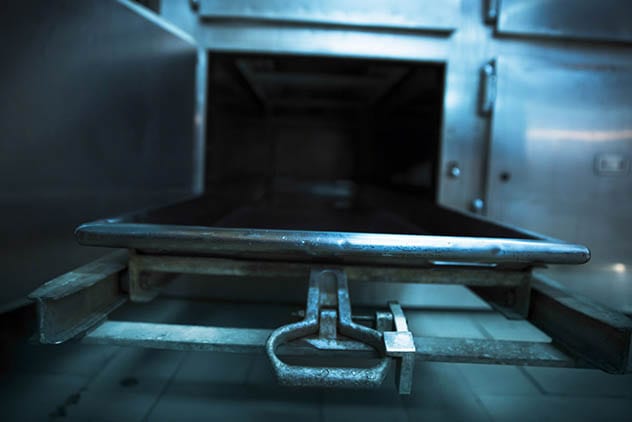
Speaking of fatalities, it’s a hard fact but many cruise lines are tailored to older guests and it’s not uncommon for a guest to die while on board. In an extreme emergency, a helipad will usually serve as a pick up point if the ship is too far out for the Coast guard to reach quickly and injured or sick passengers can be offloaded but if that doesn’t happen, there’s a ‘freezer’ section below decks designed to hold bodies until port is reached. And if you’re thinking that’s a nice precaution but maybe a little overboard, it actually happens a lot more than you think, you just don’t realize it because…[9]
1 Crew Members Have Their Own Secret Codes
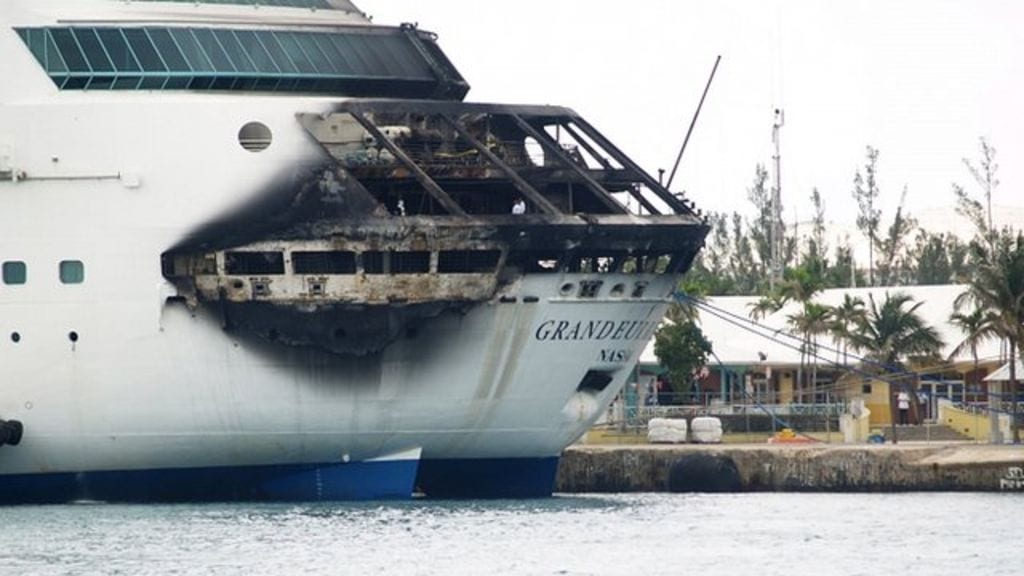
On board a ship that averages 60 – 70 different nationalities it’s only natural that crews would come up with codes to communicate with one another. Some are designated by the cruise line, Code Adam of course means a missing child and Code Bravo means fire on board. Star code or Operation Rising Star means someone has died and Delta is a quick way of alerting crew that the ship has been damaged.
Others are shorthand among different departments and some are ways to mess with the guests, like mentioning off hand that you’ll meet later in the ‘movie theater’ or ‘bowling alley’ where guests can hear, knowing none of these places exist on your ship. It’s an obfuscated way to say let’s mess with this guy, without him knowing about it.[10]
10 Secrets Businesses Don’t Want You To Know








